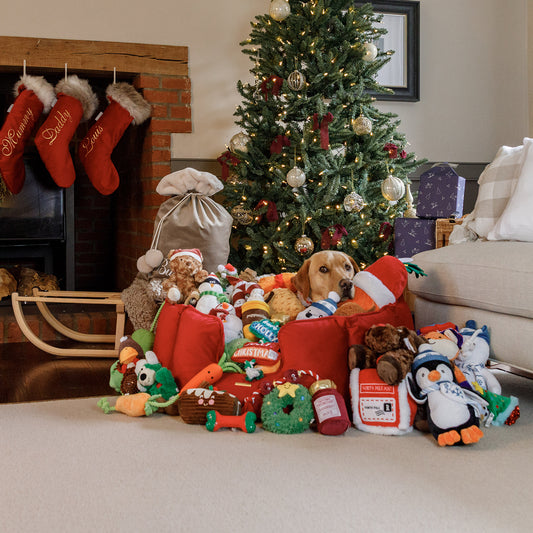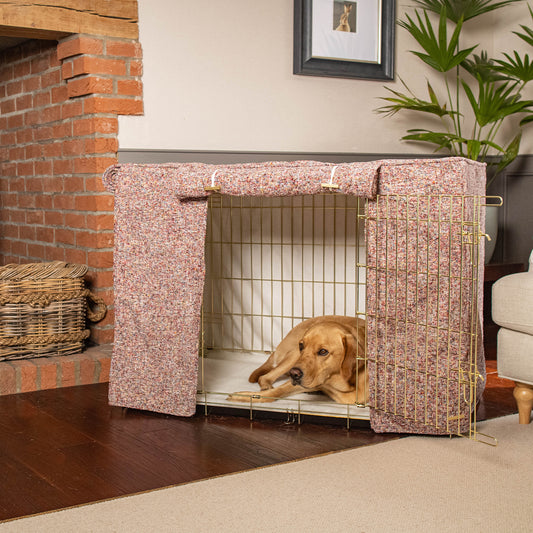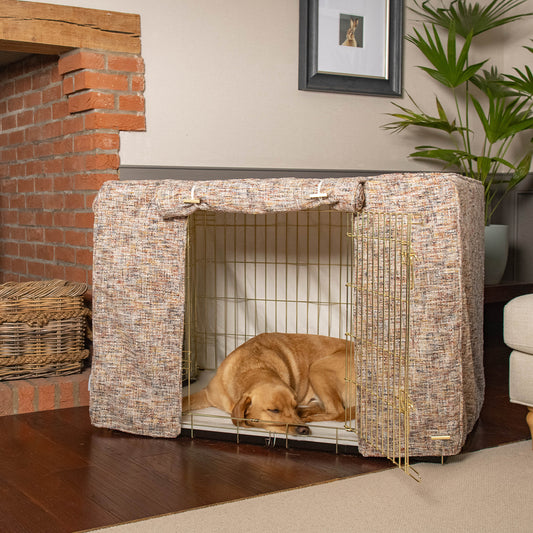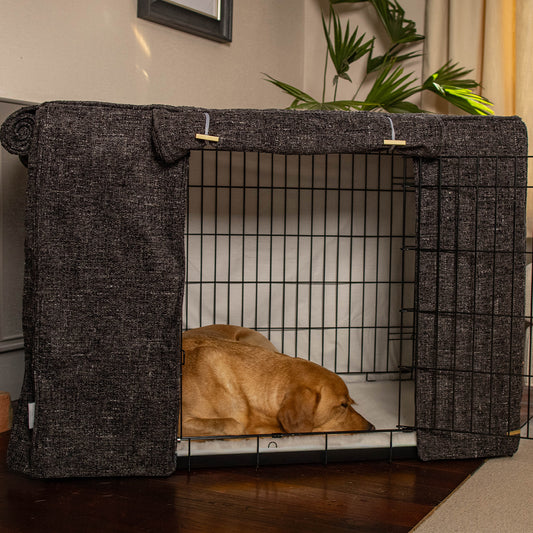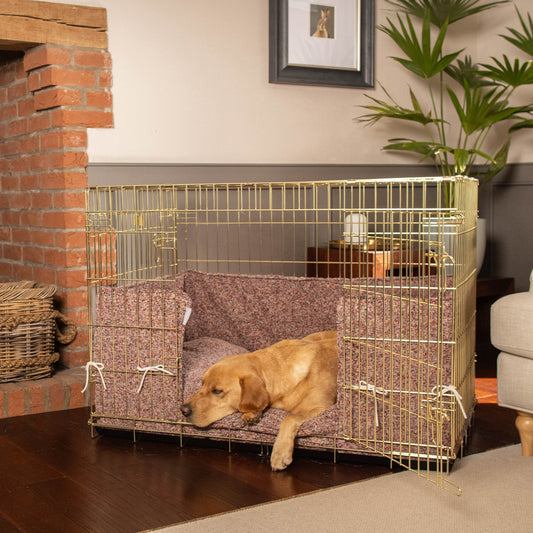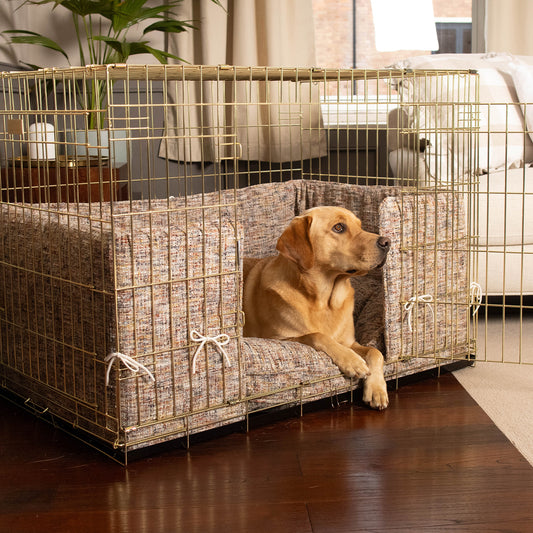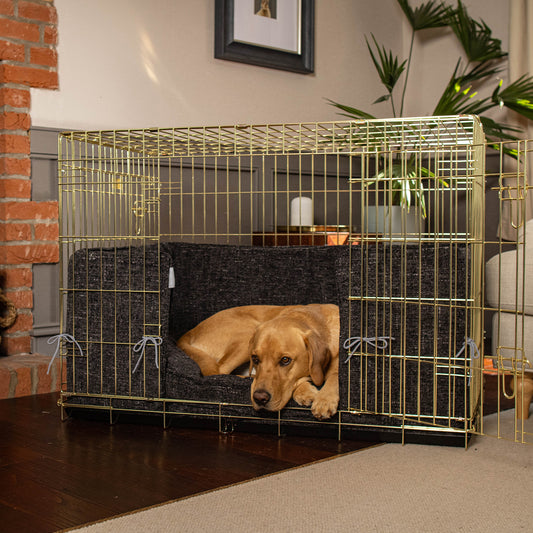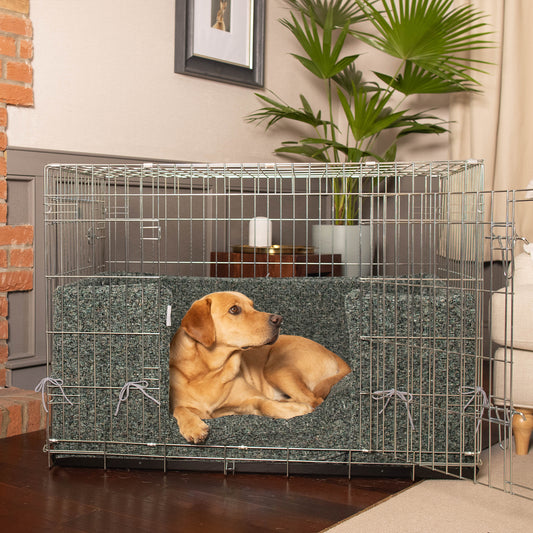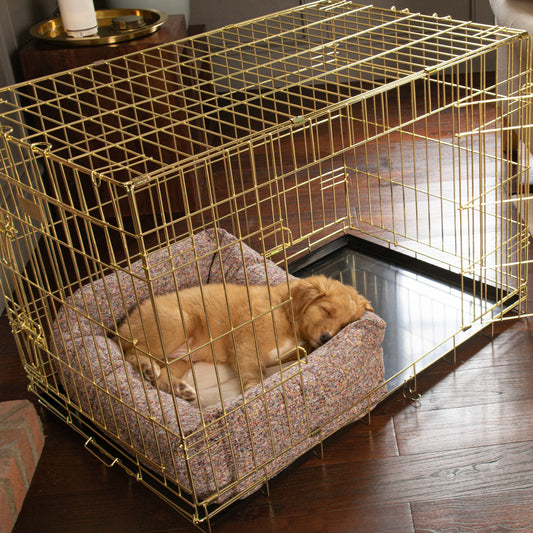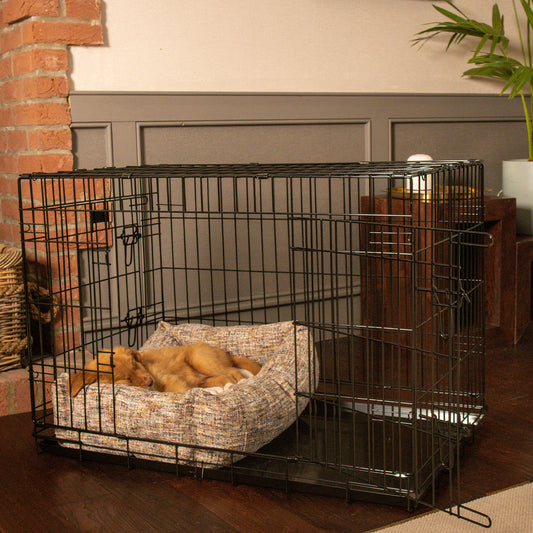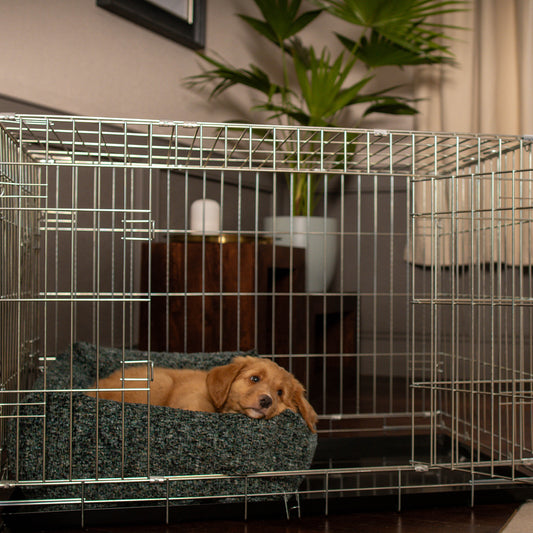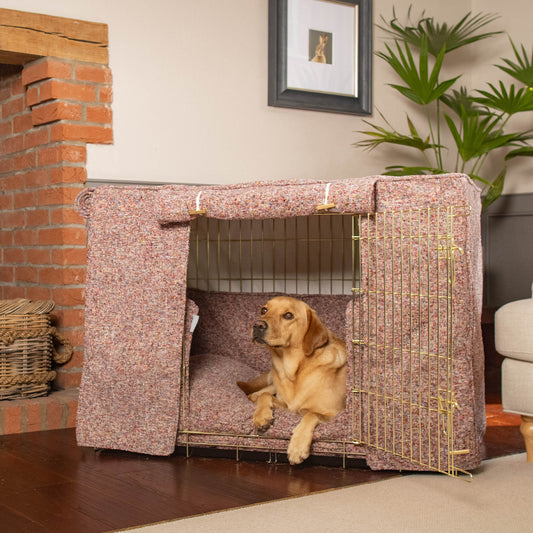If you’re getting a puppy, one of the first things you might wonder is “What will I need?”! Here at Lords & Labradors we have sourced all of the puppy essentials you can think of to help make shopping for a new puppy really simple. We have written dedicated blog posts about what to get for many specific breeds including Cockapoos, Miniature Dachshunds and Labradors. This week we thought we’d shine the spotlight on the beautiful Dalmatian. They’re a wonderfully vibrant and lively breed. Here we’ll take a closer look at the history of the breed and then provide our recommended Dalmatian Puppy Shopping List.
All About The Dalmatian Breed

The Dalmatian is famous for its distinctive black (or liver-coloured) spots on their white coat - so famous, that it was the basis for the 101 Dalmatians novel which later became a famous Disney animation! They were originally bred as hunting dogs and can be traced back to the historical region of Croatia called Dalmatia. They became popular as carriage dogs in the 18th Century and were somewhat of a status symbol throughout the Regency period.
They have gone on to have varied roles including watchdogs and even working for fire-fighters. Their natural affinity with horses meant they could help clear the way for carriages in an emergency.
They have also become popular family pets due to their beautiful, good looks and their loyal personality. It’s important to know that Dalmatians are a lively breed, and they’ll take lots of attention and need plenty of exercise. They will need lots of your time and dedication to look after well, and won’t be suitable for everyone.
If you have the time and energy to devote to a Dalmatian, they do make wonderful pets. Not only are they extremely intelligent and respond well to training, but they are very loyal and do well with older children. Just make sure you have the time in your schedule to take them for long walks every day and give them the attention they need.
Dalmatian Puppy Shopping List

XL Crate + Cosy & Calm Puppy Bed - An important part of settling a puppy in smoothly and quickly is through crate training. A crate will help with the toilet training process and also get them used to their night-time routine. We’d suggest getting a 42” crate which will grow with them into adulthood. You can set it up with a puppy bed in one side, leaving room in the other for a puppy pad and a bowl for water. Once your puppy grows up and gets used to toileting outside, you can swap the puppy bed and pads for a full-size crate cushion. The crate will become their very own little den; a place for them to rest and sleep, in comfort.
Our XL Crate + Cosy & Calm Puppy Bed Crate Set is the ideal starter set for crate training your puppy. It contains a deluxe crate along with a puppy bed that is designed to fit in exactly half the crate. Available in our signature fabrics and with a waterproof lining, the bed is stylish and practical all at once!
XL Crate Cover - We’d highly recommend adding a crate cover to the crate. This will not only make the crate look good but will have practical benefits too. The cover will create a cosy and inviting space in the den, stop draughts and help with the bedtime routine. The cover has two roll-down doors that will help to block out light. Your pup will soon learn that it’s time for bed when you roll the doors down and that it’s time to start the day when the doors are rolled up.
Puppy Blanket or Comforter - Making your puppy feel at home will be your number one priority and a blanket or comforter will offer nervous pups a feeling of security. A blanket adds a cosy layer of warmth to both their carrier on the way home and their bed in the crate. It can be sprayed with a calming solution such as Pet Remedy to help calm any feeling of anxiety. We have a stunning range of blankets to suit all tastes. We particularly love our L&L Velvet and Sherpa blankets as they’re made from super soft fabrics that puppies will love.
You could also give them a plush comfort toy. The All for Paws Warm Bear and Heart Beat Sheep are both wonderful options as they are more than just regular soft toys. The warm bear has a warming sensation and the heartbeat sheep has a beating heart that will feel just like Mum. Your Dalmatian puppy will soon settle down for a cuddle with their new plush friend!
Puppy Pads - A must for any new puppy, puppy training pads will help to stop any indoor accidents from soiling your furnishings. Whilst you will no doubt take your puppy outside regularly to encourage them to do their business outdoors, there will certainly be accidents at times. Puppy pads are great to put on the floor in your puppies’ crate at night-time (for the first few weeks) and in their pen or living space during the day.
Bowls - You’ll need some dog bowls for food and water. Choose strong and durable bowls that will be suitable for food and water.
Puppy Shampoo - Dalmatians tend to shed a lot. Even though they have a short coat, they still lose a lot of fur especially from Spring until Autumn. Getting your puppy into a regular grooming routine will help to keep shedding to a minimum. We’d suggest a good shampoo and conditioner as well as a spray that you can use in-between washes.
Puppy Brush - A good quality dog grooming brush or two will help to smooth the fur after a bath and also help remove any loose fur in-between bath times. A soft bristle brush is a great brush to start with and they are soft - an ideal way to get your pup used to being groomed. Once they’re used to being brushed you could try a massaging rubber brush or the 2-in-1 grooming tool by Rosewood that dispenses shampoo as well.
Puppy Toys - Dalmatians are very playful and full of energy so you will need a toy box of goodies to keep them entertained. A range of different toys for chewing, throwing, tugging and cuddling will appeal to all of your puppy’s senses. Toys will be the perfect distraction in-between walkies when your puppy is still feeling energetic!
Your puppy will also go through their teething phase within the first few months of bringing them home. A KONG toy or two will help to soothe their aching gums and provide some distraction if boredom does kick in.
Training Treats - Training your puppy will be one of your main priorities - whether it’s crate training, potty training or lead training, having some treats on hand to reward your pup’s efforts and good behaviour is a must!
Puppy Training Clicker - Dalmatians are very clever and they’ll take very well to training exercises. A clicker will come in handy further along in their training journey. A brilliant tool for teaching your dog new tricks!
Puppy Collar, Lead and Harness - When it comes to walking your puppy, you’ll need to have a good fitting harness, collar and lead. A harness will ensure good support and comfort when puppy is first learning and tugs in the opposite direction. A matching set by Ruffwear is a brilliant option for lead training as they are so durable and made to last.
XL Cosy Tweed Box Bed - As puppy grows up and you want a bed that will suit them during adulthood, our box beds are a lovely option. The XL size is ideal for an adult Dalmatian. They have squishy cushions for comfort and the padded walls are perfect for resting sleepy heads! They come in a range of stunning fabric options, with a style to suit every home interior.
Full Size Crate Set - Puppies who have been crate trained go on to love their crate well into adulthood. Once your puppy has outgrown their puppy bed and they no longer need puppy pads, you can consider swapping to a full-size crate set. Swap the puppy cushion for a crate cushion and bumper to create a truly cosy doggie den. You could choose a fabric to match your existing oilcloth crate cover, or you could swap out everything and choose something completely new. It’s totally up to you!
























































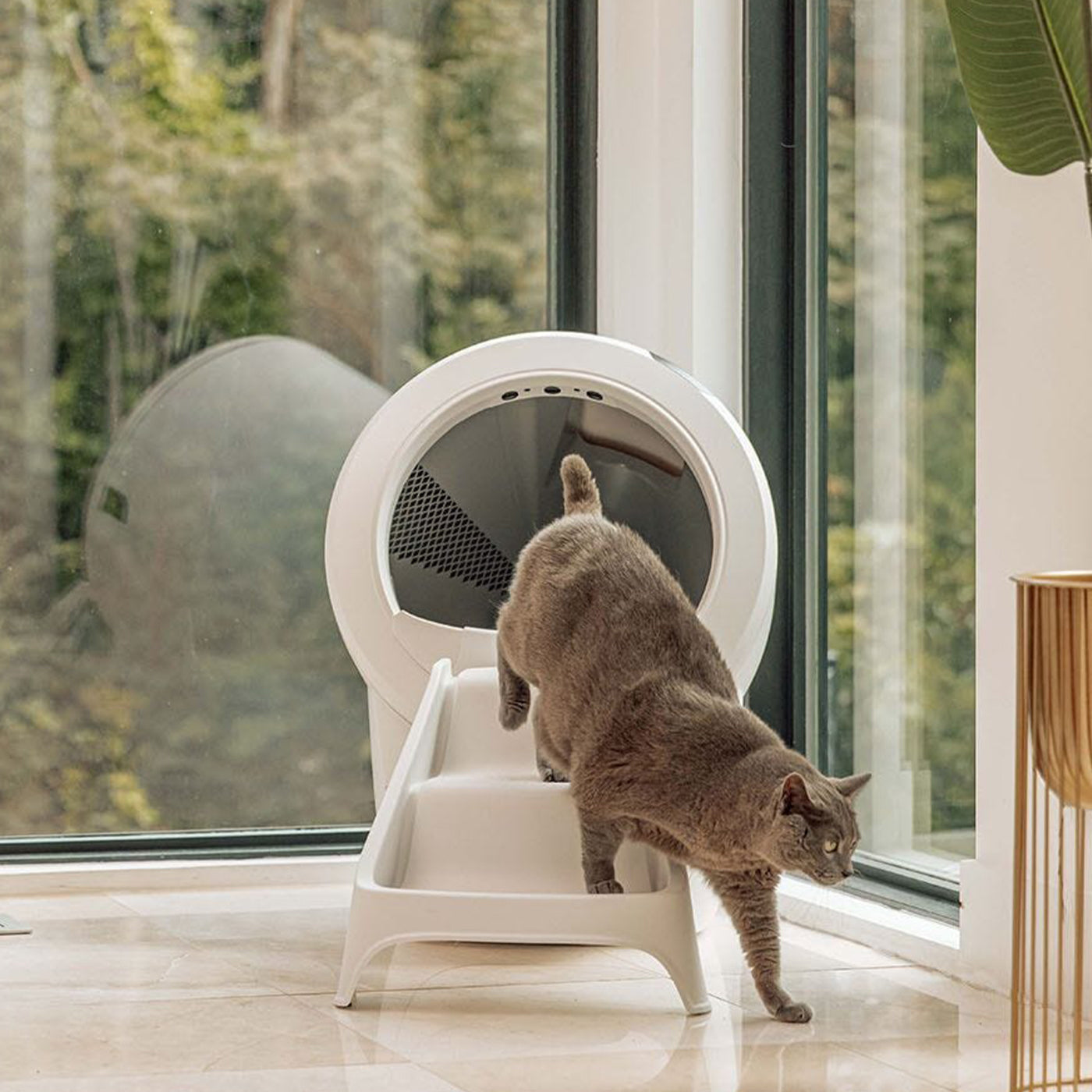

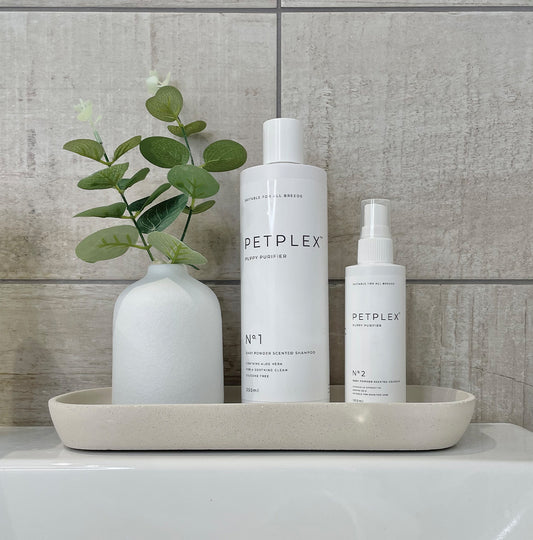
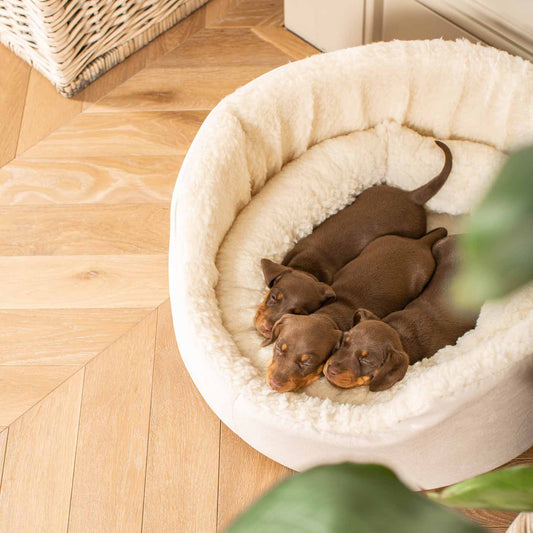
![[colour:mink boucle] Luxury Boucle Pet Scent Blanket collection, In Stunning Mink Boucle. The Perfect Blanket For Dogs, Available at Lords & Labradors](http://www.lordsandlabradors.co.uk/cdn/shop/products/Mink-Boucle-Scent-Blanket.jpg?v=1660130492&width=533)



